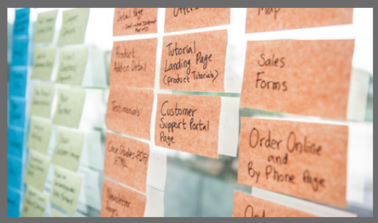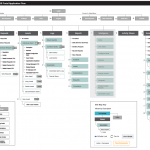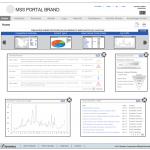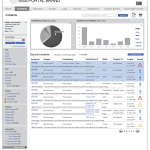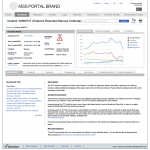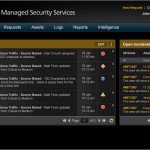
Symantec Managed Security Services (or MSS) contracted my company Siteworx to do user research, strategy, redesign and ultimately rebuild their system. Not only that, they also asked us to help teach them how to operate in an agile development methodology.
MSS is a corporate security incident management system that analyzes data in your networks to identify data loss, malware issues, software update gaps, and other security attacks. It logs all these incidents and then relies on security personnel to review and remediate them in a timely fashion.
[youtube id="XX6dDywzTs0" align="center" mode="normal" autoplay="no" maxwidth="800"]
Above is a link to a product video that showcases much of the design work I completed there. While I was not involved in the production of this video, all of the screens shown are ones I designed.
I worked on this project for about a year and a half and almost all of my designs and features are in production today, years after the I left the project. I loved this project, not just because we got to work on a really cool, potentially cutting edge application, but because I felt that the issue of corporate security was really an important problem that needed to be solved. The users in this community desperately need help to address the thousands of incidents that occur in their networks. Their jobs, as well as the livelihoods of their companies, depend on them being successful in maintaining a secure network. The data they had to analyze was really complex and had many dimensions which changed depending on the type of threat. They needed to be able to prioritize threats in such a way that they could address the most severe ones first, but also to be able to identify longer-term trends and perform preventative actions to solidify their networks from attack. This was an extremely complex system and I enjoyed taking on the challenge of coming up with solutions that would provide value to the client and users.
RESEARCH
I started by talking to all client stakeholders to get a sense of what they were trying to achieve with this redesign and where they thought they could take the application in the future. I talked to over 20 different people within Symantec from VPs to developers to security experts. I got a decent sense of the different types of user personas that needed to be accounted for and wanted to make sure they were covered in the next phase of user research.
After conducting the internal research, I also spoke with their current users; 39 of them to be exact. Below is a graphic that shows the different types of users and basic stats on them. I created all the interview questions and had to coordinate opposing schedules to interview key individuals who worked on the other side of the world.
STRATEGY
The next step in the process was to conduct what we called an alignment session with all the client stakeholders I interviewed before. This session defines the business, application and user goals that we need to address, as well as the functionality and content related to those goals. This session usually takes 2-4 hours to allow enough time to identify all the items and prioritize them within their categories.
We then set off to create a strategy for the application design and implementation, taking into account all of the information gathered during the research phase. One of the things that we noticed was that business priorities and user priorities did not align in relation to features, as well as the trajectory of the product overall. As a result, I had to put serious thought into designing features that would help these users and still propel the business to where it needed to go.
INFORMATION ARCHITECTURE
At this point in the project we began the design and organization of the site. I managed one of our junior UX designers on creating the information architecture. One of the key components they were missing in the application was a great dashboard that compiled all the different kinds of incidents, which were currently siloed into different areas of the application. We wanted to create a page that allowed them to monitor all their issues from one place.
WIREFRAMES
We created some initial wireframes (in Adobe Illustrator) as a starting point vision for where we thought we could take this application. We had some amazing information and feedback from users, as well as strong strategic direction from the stakeholder team. We created about 30 different wireframes initially, knowing full well that we would likely have to iterate on them once we jumped into an agile methodology.
AGILE IMPLEMENTATION
Prior to this point in the engagement, I was very much working in a consultative deliverable based fashion., Once we provided the value and vision up front, the client realized they needed to have me on-site to assist in completing this vision. I became one of the key business stakeholders on their internal teams for the next year, helping them to get on the right track to implementing a vision that we knew would take a few years to come to fruition.
I was involved in all major agile meetings, from quarterly and monthly planning and prioritization sessions all the way down to sprint planning. I also planned and conducted UAT review sessions at the end of each sprint to test out new functionality with real users. In conjunction with another consulting firm,we taught the Symantec team how to do agile and had a mixed Scrum team, comprised of personnel from Symantec, Siteworx, and the 3rd party consulting firm.
We went through several additional iterations of user experience and visual design over the course of that year and probably only implemented about a quarter of the full implementation across several releases. We knew my shelf life on the project was limited and Siteworx needed me to start on other initiatives. I was involved in hiring a new UX lead into Symantec who would take over for me in the long run and began teaching her the ins and outs of the project.
Here are some additional visuals that were created in that year with the help of a talented visual designer:
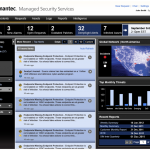
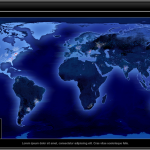
I have also included a video of an actual client explaining how our enhancements and improvements really made a difference:
[youtube id="rTPQjXXlXnc" align="center" mode="normal" autoplay="no" maxwidth="800"]
It really does take a village to raise a child, so I would be remiss if I did not mention that we had a great visual designer, a very thorough requirements team and talented front and back-end engineers, who were essential in getting this effort completed. I am extremely proud to have been a part of this project and feel even more confident in the quality of our work when I see that Symantec continues to implement the vision we set forth so long ago.

